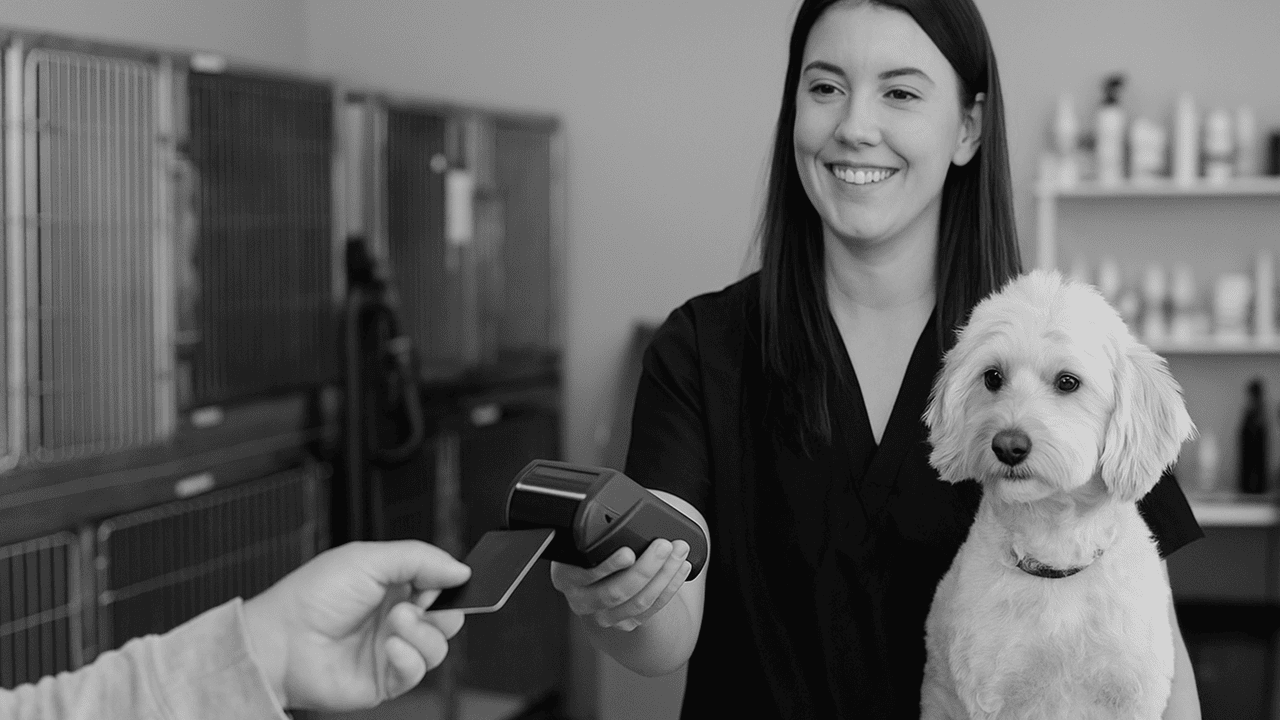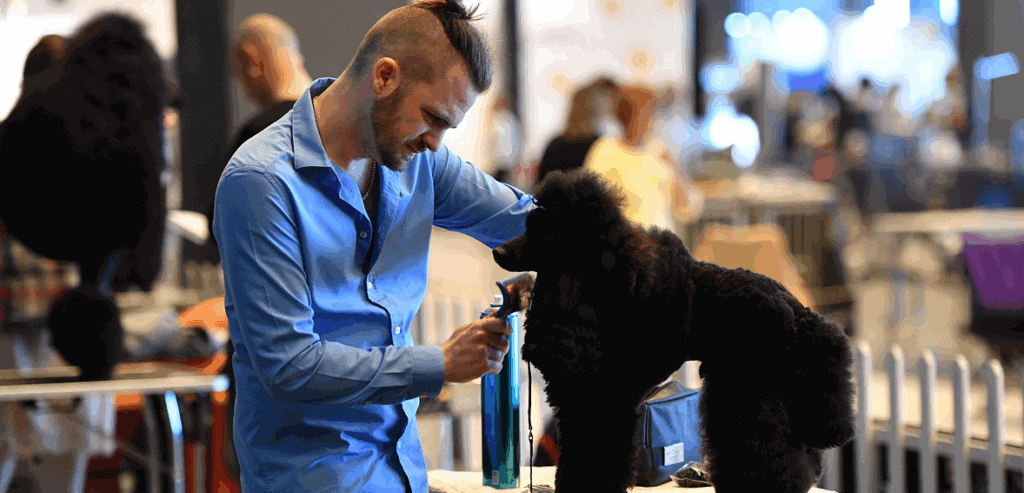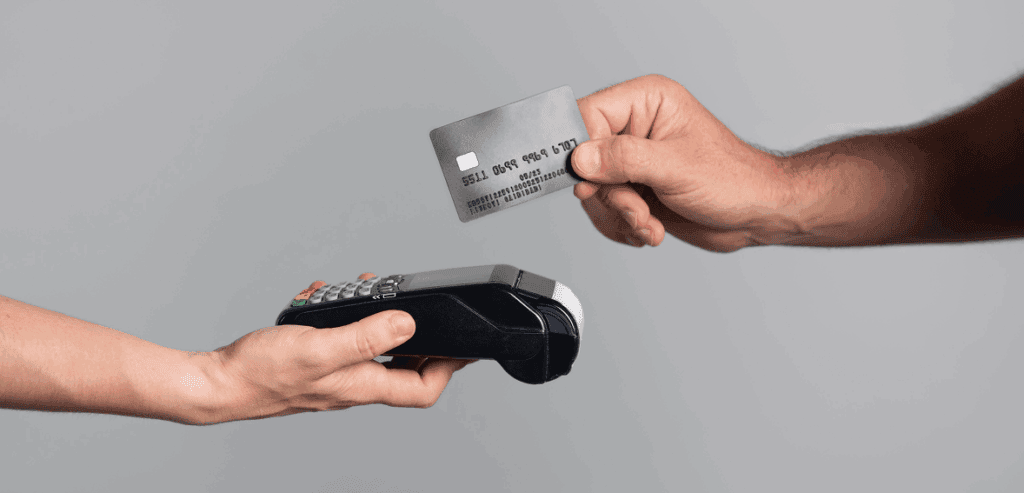
By Mary Allen July 10, 2025
Across industries, cashless payments are becoming the new norm. From small food trucks to salons and home service providers, more businesses are choosing digital transactions over traditional cash. The pet grooming industry is no exception. As customer expectations evolve and technology becomes more accessible, pet groomers are adopting cashless systems to stay competitive, offer convenience, and streamline their operations.
This shift is not just about keeping up with trends. It reflects real changes in how consumers pay and how service providers operate. Going cashless offers numerous advantages for grooming businesses, but it also comes with practical challenges and decisions to consider. From payment processing to customer trust and cost management, pet groomers must understand the full picture to make informed choices.
The Shift Toward Cashless in Service Industries
Digital payments are no longer limited to retail or e-commerce. They have expanded into every corner of the service economy. In pet grooming, where customer interaction is brief and often scheduled, cashless methods are ideal for reducing transaction time, improving accuracy, and enhancing customer experience.
Modern pet owners are used to paying for groceries, bills, and rides through apps or contactless methods. When they visit a grooming salon or book a mobile groomer, they expect the same level of convenience. Groomers who rely only on cash may find themselves out of sync with these expectations.
Why Pet Groomers Are Choosing to Go Cashless
Several key factors have influenced pet groomers to move away from cash. These include operational efficiency, security concerns, customer demand, and the rise of digital platforms that integrate appointments, payments, and communication.
Cashless systems reduce the need for manual recordkeeping, eliminate risks related to cash handling, and simplify end-of-day reconciliation. They also enable smoother tipping, easier refunds, and faster customer service interactions. For small businesses, this can significantly improve the flow of daily operations.
Convenience for Customers
Pet grooming customers often prefer to pay quickly and move on. A cash transaction can slow things down, especially if the client has to visit an ATM or if the groomer needs to make change. Digital payments, whether through cards, links, or mobile wallets, offer a hassle-free experience.
Additionally, customers increasingly rely on contactless and mobile-based payments for safety and hygiene reasons. With just a tap or a few clicks, they can complete their transaction and receive a receipt instantly. This convenience is one of the strongest drivers behind the shift to cashless.

Operational Efficiency for Groomers
Managing cash comes with a set of responsibilities that take time and attention away from core services. From counting bills to storing change and managing bank deposits, it adds friction to business operations.
Going cashless eliminates these steps. Payments are automatically logged in the system, daily reports are generated digitally, and end-of-day reconciliation is faster. This gives groomers more time to focus on what they do best—taking care of pets and providing excellent service.
Reduced Risk and Improved Security
Handling cash exposes grooming businesses to theft, loss, or miscounting. Whether it is from external threats or internal errors, the presence of physical money introduces a level of risk that digital systems help avoid.
Digital payments, on the other hand, offer secure, traceable, and verifiable transactions. With encrypted systems and fraud detection tools in place, both groomers and clients can trust that the payment process is safe.
Easier Tip Collection
In a service industry like pet grooming, tips are a significant part of staff income. However, collecting tips in cash can be inconsistent, especially when customers do not carry enough money or feel uncomfortable asking for change.
Digital payments often include tip prompts that allow clients to add gratuity easily before completing the transaction. This results in more consistent tipping and helps boost staff morale and satisfaction.
Simplified Recordkeeping and Taxes
One of the hidden benefits of going cashless is the ease of tracking income and preparing for taxes. Every digital transaction is logged with time stamps, service details, and payment amounts. This creates an organized and reliable financial trail.
For groomers filing taxes, applying for loans, or analyzing revenue trends, digital records provide clarity and credibility. This can also help when applying for financing or insurance, where accurate income documentation is essential.
Enabling Remote and Contactless Payments
Pet grooming is not always confined to a storefront. Mobile groomers who travel to client homes need flexible ways to collect payments without depending on physical cash. Cashless systems allow them to send invoices, payment links, or use mobile card readers in the field.
Even in traditional salons, contactless payments reduce the need for close interaction during checkout. This is especially important in today’s health-conscious environment, where many customers still value social distancing and minimal touchpoints.
Integration with Appointment and Business Tools
Modern pet grooming businesses often use digital platforms to manage bookings, client communication, and service records. When payment systems integrate directly with these tools, the result is a seamless customer experience from start to finish.
Clients can schedule their appointment, receive reminders, complete intake forms, and make payments—all within a single platform. This reduces no-shows, speeds up checkouts, and allows groomers to manage everything from one place.
Flexibility in Payment Options
Cashless does not mean card-only. Today’s systems support a wide range of payment types including credit and debit cards, digital wallets, QR codes, ACH transfers, and even buy-now-pay-later options. This flexibility caters to a variety of client preferences. Remember that credit card payments may come with extra charges.
Offering multiple digital payment methods shows clients that their convenience is a priority. It also reduces the chances of lost sales due to a lack of available payment options.

Trends Driving the Cashless Movement in Grooming
The pet grooming industry is evolving, shaped by customer behavior, technology advancements, and broader economic shifts. Several trends are pushing the industry toward a fully cashless model.
Rise of Mobile Grooming Services
Mobile pet grooming is on the rise, offering door-to-door services that prioritize convenience. These businesses often operate without a physical storefront and cannot rely on cash payments. Digital systems allow them to collect payments on the go, send invoices remotely, and avoid carrying cash.
Growth of Pet Care Apps
A growing number of grooming businesses use mobile apps or online portals for customer interaction. These apps include appointment scheduling, reminders, and integrated payments. As more clients book online, digital payments become a natural part of the process.
Younger Pet Owners and Digital Habits
Millennials and Gen Z pet owners are more likely to prefer digital interactions, including how they pay. This demographic is also more likely to use digital wallets and demand contactless checkout options. Groomers looking to attract and retain younger clients must cater to these preferences.
Health and Safety Awareness
The pandemic shifted customer attitudes toward contactless experiences. Even as restrictions ease, many people continue to favor digital payments for hygiene reasons. Grooming businesses have adapted by offering no-touch checkouts and online billing.
Common Concerns About Going Cashless
Despite the benefits, some grooming businesses are hesitant to go fully cashless. Concerns include customer pushback, transaction fees, and technology adoption challenges. These are valid considerations but can often be managed with the right planning.
Fear of Alienating Customers
Some clients, particularly older pet owners, may still prefer paying in cash. Completely eliminating cash might feel exclusionary. The key is to communicate clearly and provide support for those transitioning to digital methods.
Businesses can take a gradual approach—encouraging card payments but still accepting cash for a while. Offering help or tutorials on how to use digital payment methods can also ease the transition.
Managing Transaction Fees
Digital payments come with fees that can add up, especially for small businesses. However, many grooming businesses find that the time and operational savings offset these costs. Some even build processing fees into their service prices or offer small discounts for alternative payment methods.
Learning Curve and Setup
For groomers not familiar with technology, setting up a cashless system may feel overwhelming. But modern tools are user-friendly, with guided onboarding, customer support, and mobile apps that simplify the process.
Starting with a basic card reader or payment link system is often enough for small teams. As the business grows, you can explore more advanced features like subscriptions, auto-billing, and CRM integration.
Realities of Running a Cashless Grooming Business
The shift to cashless does not eliminate all financial responsibilities. You still need to monitor payments, reconcile accounts, and ensure compliance with tax laws. However, digital tools make this easier and more accurate.
You may also need to update your pricing structure, staff training, and service policies to reflect the new system. Informing your customers early and consistently can smooth the process and avoid confusion.
Having a backup payment method in case of technical failures is also important. Whether it is a mobile hotspot, manual card entry, or an emergency cash box, being prepared ensures you never lose a sale.
Tips for Transitioning to a Cashless Setup
Moving to a cashless model does not need to happen overnight. Here are some steps to make the transition smooth and effective:
- Start by tracking how many clients already use cards or digital payments. If the majority do, consider making cashless the default.
- Invest in a reliable mobile POS or software platform that supports multiple payment methods.
- Train your team on how to handle digital transactions, issue refunds, and troubleshoot common issues.
- Notify your clients through email, social media, and at the salon about the shift. Explain the benefits and offer support.
- Keep a basic backup plan for rare cases where cash may still be needed or systems are down.
Is Cashless the Future for Pet Grooming?
All signs point to yes. As consumers become more digitally oriented and technology continues to simplify financial transactions, cashless operations will likely become standard in the pet grooming industry.
This does not mean that cash will disappear completely, but its role will diminish over time. Grooming businesses that embrace this change now will be better positioned to meet customer expectations, manage their operations efficiently, and grow their brand.
The decision to go cashless should align with your business goals, client demographics, and service model. For most, the benefits outweigh the challenges, especially when implemented with care.
Conclusion
The move toward cashless payments in pet grooming is not just a passing trend. It reflects deeper shifts in consumer behavior, business operations, and service expectations. Groomers who adopt digital payment systems gain a competitive edge, improve their efficiency, and offer a smoother experience for clients. From easier tipping and reduced risk to cleaner recordkeeping and faster checkouts, going cashless makes sense for many grooming professionals.
While the transition may come with questions and challenges, the long-term payoff in convenience, security, and growth is clear. By understanding the benefits, staying aware of trends, and preparing for the realities of digital transactions, pet groomers can confidently embrace a cashless future that serves both their business and their loyal four-legged customers.